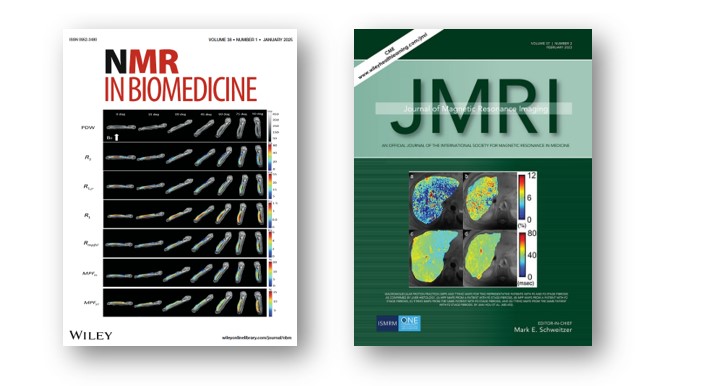Two featured front cover articles
2 Jan 2025
Orientation-Independent Quantification of Macromolecular Proton Fraction in Tissues with Suppression of Residual Dipolar Coupling by Gao et al, NMR in Biomedicine, January 2025
Quantitative magnetization transfer (MT) imaging noninvasively characterizes tissue macromolecular environments but can be affected by orientation dependence in ordered tissues due to residual dipolar coupling (RDC). This study shows that macromolecular proton fraction mapping with spin-lock (MPF-SL) can suppress RDC effects without exceeding SAR and hardware limits in clinical MRI systems, offering a practical solution for orientation-independent quantitative MT imaging in vivo.
Detecting Early-Stage Liver Fibrosis Using Macromolecular Proton Fraction Mapping Based on Spin-Lock MRI: Preliminary Observations by Jian et al, Journal of Magnetic Resonance Imaging, February 2023
This study evaluates the ability of macromolecular proton fraction mapping based on spin-lock MRI (MPF-SL) to detect early-stage liver fibrosis. In a cohort of fifty-five participants (22 with no fibrosis and 33 with early-stage fibrosis), MPF values were significantly higher in early-stage fibrosis (F1–2) compared to no fibrosis (F0) and showed a positive correlation with fibrosis. MPF demonstrated promising diagnostic accuracy for fibrosis differentiation, achieving an area under the ROC curve of 0.85. Furthermore, MPF-SL was not influenced by liver iron concentration (LIC) or fat fraction (FF). These findings highlight MPF-SL as a promising non-invasive technique for early detection of liver fibrosis.


